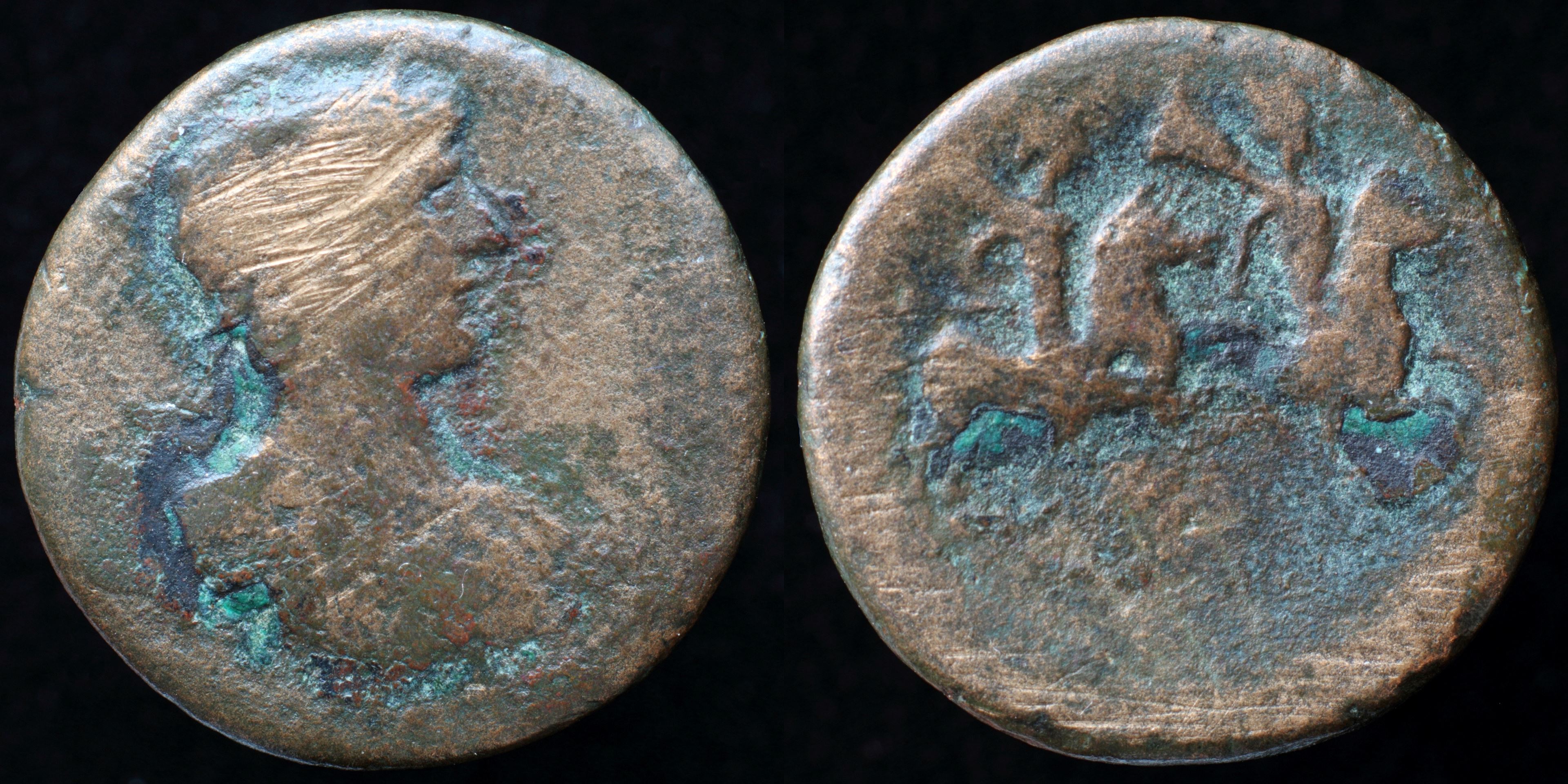Sparta was a prominent city-state in ancient Greece. In antiquity the city-state was known as Lacedaemon, while the name Sparta referred to its main settlement on the banks of the Eurotas River in Laconia, in south-eastern Peloponnese. Around 650 BC, it rose to become the dominant military land-power in ancient Greece.
Spartans were forbidden (in theory) from engaging in menial labor or trade, although there is evidence of Spartan sculptors, and Spartans were certainly poets, magistrates, ambassadors, and governors as well as soldiers. Allegedly, Spartans were prohibited from possessing gold and silver coins, and according to legend Spartan currency consisted of iron bars to discourage hoarding. It was not until the 260s or 250s BC that Sparta began to mint its own coins.
During the Punic Wars Sparta was an ally of the Roman Republic. After 146 BC, Sparta become a free city in the Roman sense, and the city became a tourist attraction for the Roman elite who came to observe exotic Spartan customs.
Spartans were forbidden (in theory) from engaging in menial labor or trade, although there is evidence of Spartan sculptors, and Spartans were certainly poets, magistrates, ambassadors, and governors as well as soldiers. Allegedly, Spartans were prohibited from possessing gold and silver coins, and according to legend Spartan currency consisted of iron bars to discourage hoarding. It was not until the 260s or 250s BC that Sparta began to mint its own coins.
During the Punic Wars Sparta was an ally of the Roman Republic. After 146 BC, Sparta become a free city in the Roman sense, and the city became a tourist attraction for the Roman elite who came to observe exotic Spartan customs.
Modern location:
(1)
Hadrian

An
AE
Diassarion
struck 117-138 AD
in
Sparta
Obverse: laureate bust right, draped shoulder; ΑΥΤ{Ο} ΚΑΙ{СΑΡ} ΤΡΑΙ{Α} ΑΔΡΙΑΝΟС СΕΒ{ΑС}
Reverse: Dioscuri on horses right, holding spear and reins; ΛΑΚΕΔΑΙΜΟΝΙΩΝ
Diameter:
24 mm
Die Orientation: -
Weight: 9.6 g
Die Orientation: -
Weight: 9.6 g
The information with this coin from the Albert Reeves collection says that it was bought for £2 back in 1984 from S P Kitson who graded it as 'Poor'. We have nothing else to say about it except that we are asking the same price now as it was 34 years ago.
Grunauer group XXXVII, series 1-11; RPC online Volume III, 335
